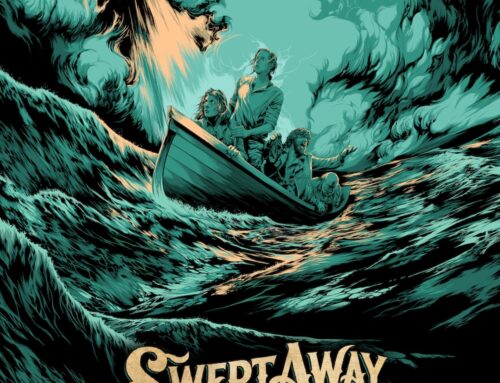 Guest Post by Dan Farkas
Guest Post by Dan Farkas
“Why are we doing what we are doing? If you don’t know the answer, stop.“ ~ Dan Farkas
As a new school year begins at Ohio University, I put the over/under on how many times I make that statement to students at 300. That’s 90 classes, 15 Scripps PRSSA meetings, and far too many emails to count. Take the over. Seriously.
For students, it’s a cue to understand how tactics align with strategy. It’s new turf. For professionals, the same holds true with video. Everyone knows video is the next big thing; yet, I find many people struggle to grasp multimedia measurement. I could write a book about it; I could also write two sentences.
Why are we doing what we are doing? If you don’t know the answer, stop.
There’s more to the equation, in particular when it comes to measuring multimedia. There are times I feel like incredibly smart people revert to Derek Zoolander and Hansel when thinking about video measurement. That needs to change as video impact continues to grow.
The good news is it is possible to better measure multimedia without adding to your workload. Brands can even use tools already in their toolbox or easily accessible through this blog. It all begins with one simple concept: measure video completion.
Everyone thinks about plays. I believe video completion can be more important because it explains the customer journey, allowing brands to adapt and react. Think about it. It’s easy to click on a video. In fact, here is a cute cat video you can look at right now.
Here’s the problem. How many people watch a full hour of this? I hope nobody is raising his or her hands. How can you further engage people who watch the whole video or only part of it? Here are some steps to deal with that challenge/opportunity:
1. Develop a baseline.
The first thing I want to review is the completion percentage of current content. I’ve seen studies suggesting a good completion percentage is anywhere from 10-40 percent. For me, that number doesn’t immediately matter.
I want to see a baseline of existing video content segmented by content bucket.
Maybe a “how to” video does well. If so, make more of them in the future and promote those videos more in the present. Maybe the talking head clips shot on a phone is doing dreadful numbers. If so, try something else.
2. Escalate the call to action in existing content.
The beauty of multimedia content is that it can have a much longer shelf life than other forms of social storytelling. The downside is brands can spend thousands (or more) to develop the content.
Don’t let old content become a sunk cost.
If your video has a low completion percentage, there are ways to adapt and squeeze the most out of its value. It’s easy to create a call to action (CTA) and move it the first minute, 30 seconds or 5 seconds of a video. YouTube allows you to create links; you can also write links in the description that encourage future behavior. This way, brands can make the most of what they already have and measure the success of the CTA. If problems persist, brands can take the lessons learned and apply it to future content.
3. Increase the completion percentage through segmentation.
Try to double your completion percentage in six months. Let’s say your completion percentage is 10 percent. Nobody goes from 0-100 that quickly. I’ll test content to see what works and what doesn’t. It’s the same kind of quality improvement process used in Facebook ads, email campaigns and a host of other marketing strategy. You can apply that theory to multimedia as well.
The challenge is to think about video creation in the same way as other forms of media.
Where does it fit in the customer journey? What content bucket does it fill? What times of day will it be promoted in social media, etc.? Too often, brands create one video that tries to be everything to everyone. That’s not an ideal scenario, and there ways to create multiple pieces of content in a single video shoot. Segment. Segment. Segment.
4. Play the game.
How many of you have watched a video on your device and had to put it down because you were supposed to be working/driving/doing something more important? How many immediately skip the ad when you are able to on YouTube? How many of you only listen to the audio on a video or mute the sound and just watch the screen? All of you can put your hands down now.
Too many brands view online video the same way they view family movie night, with everyone huddled around the couch eating popcorn.
That’s not fully practical. I WANT everyone to watch every second of your video, but I have to assume that’s not the case. Every piece of content is five seconds in length; that’s how long customers have before making a decision about further engagement.
On one hand, the content should be compelling enough for people to stay. On the other hand, you never bat 1,000. Give those people who are going to leave a place to go. CTA links or other referrals are your friend. Here’s a different way of looking at it from Geico.
Why are we doing what we are doing? If you don’t know the answer, stop.
Video has more purpose now than ever before. When aligned with strategy, it has measured impact. Use the new school year to learn more about customers, your brand and how the two can better mesh together in the world of online video.
 Dan Farkas is a Lecturer of Strategic Communication at Ohio University and is a marketing consultant when not in class. Feel free to connect with him on LinkedIn or @danfarkas on Twitter.
Dan Farkas is a Lecturer of Strategic Communication at Ohio University and is a marketing consultant when not in class. Feel free to connect with him on LinkedIn or @danfarkas on Twitter.
Image: Jakob Owens via Unsplash, CC Zero









Dan, some great practical advice for making the most out of video content, thanks! Definitely gave me some new ways to think about our videos.